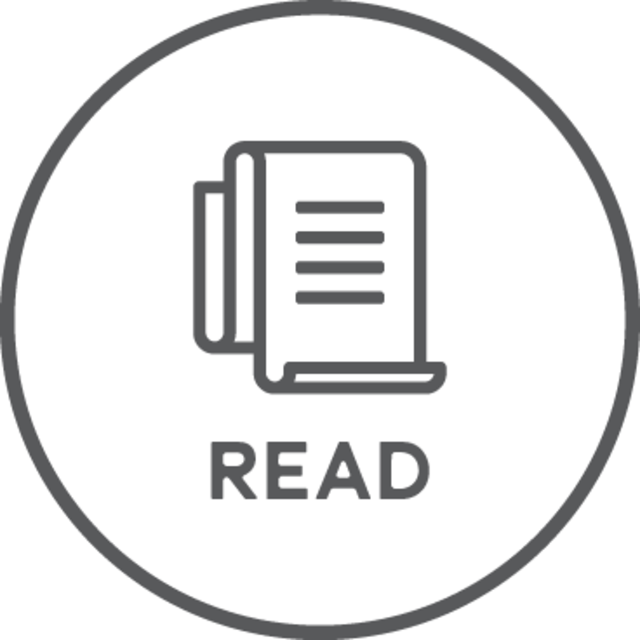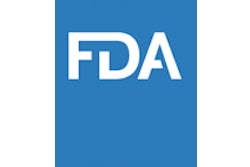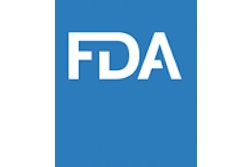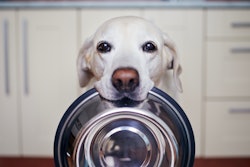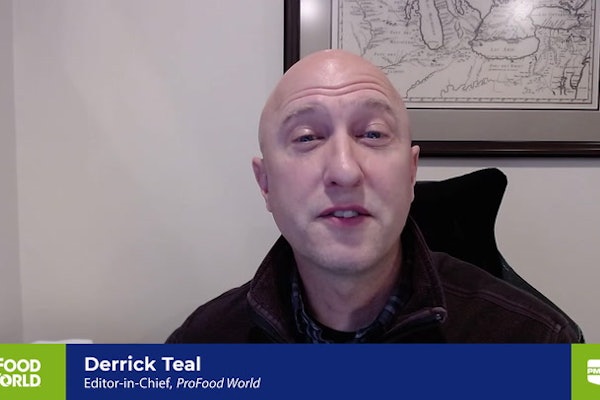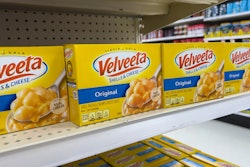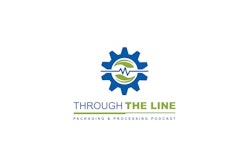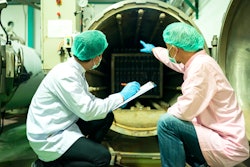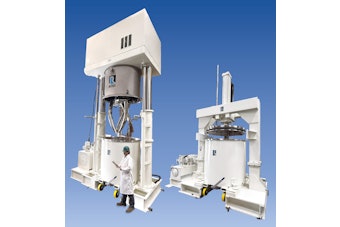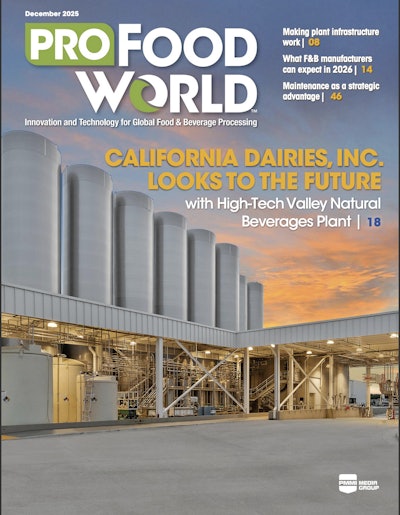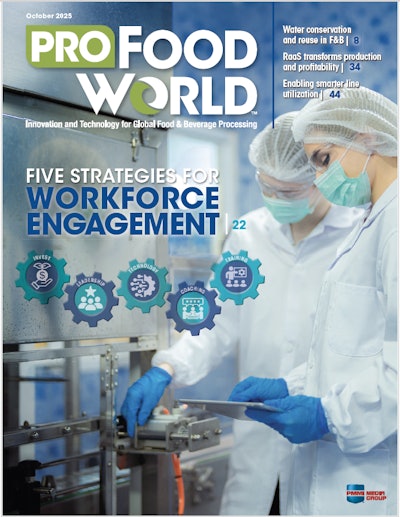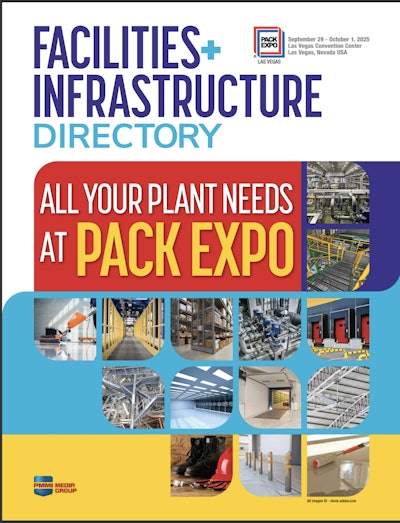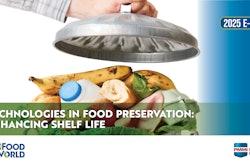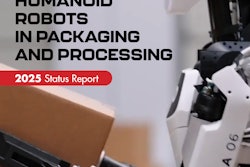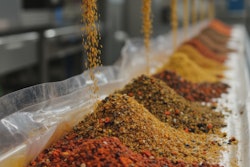As a key part of its New Era of Smarter Food Safety Blueprint, the U.S. Food and Drug Administration (FDA) sees a great deal of potential in artificial intelligence (AI). It’s a game-changing tool in the food safety toolbox. There are a variety of opportunities AI can offer to help protect consumers from food safety issues, as well as other potential uses of AI for food producers to consider, according to experts on a podcast released by the FDA.
The FDA expects AI will “bend the curve of foodborne illness in this country, and around the world,” said Frank Yiannas, deputy FDA commissioner for food policy and response, who moderated the discussion.
AI and machine learning tools could strengthen predictive analytics capabilities and be used for import screening. The FDA regulates huge amounts of imported fresh vegetables, fresh fruit, and seafood, and every day must make admissibility decisions such as which shipments to examine, sample, and test on thousands of entry lines.
In August 2020, the FDA shared initial finding from a seafood pilot the agency has been conducting that leverages machine learning to predict which shipments of imported food pose the greatest risk of violation. The proof of concept involved training a machine learning model against two years of data tested against subsequent years’ data. The results suggest machine learning can significantly increase the likelihood of identifying a shipment containing potentially contaminated products. The FDA says it is reviewing results from the second stage of the pilot to be released soon.
AI could also be used to mine information from nontraditional sources, such as social media and apps, which could further help in detecting and identifying outbreaks and provide consumer-faced health reporting, Yiannas noted.
AI to protect consumers from unsafe food
AI is already becoming embedded in the end-to-end supply chain of agriculture and food, including AI-powered Internet of Things (IoT), to improve efficiencies, detect unsafe ingredients and foods, and ensure compliance to food safety protocols and regulations. The technology can further be used to reduce a company’s environmental footprint and waste, according to Maria Velissariou, global corporate R&D vice president and chief science officer for Mars.
Several examples show how AI is can improve food safety. AI-based horizon scanning is being used to generate foresights in food safety and risk mitigation, Velissariou said. It can also “provide more transparency and holistic perspective on recalls and withdrawals and, in this way, facilitate learning and improvement within an organization and across industry.”
This technology can be used on grand-scale food safety incident announcements from major agencies or alongside web crawling software systems and natural language processing systems to detect local incidents reported by small authorities.
Aflatoxin predictive models can be deployed within supply quality assurance to guide sourcing options. The model at Mars is based on high-resolution meteorological, geospatial, and temporal data and designed to predict what aflatoxin generates to the field during transportation and storage. This would provide farmers with preventive tools to mitigate formation from the beginning.
AI can also be used in operational settings as well as in newsletters to inform internal quality councils and experts of external risk intelligence on a periodic basis for strategic decision-making and to inform all the food safety professionals in a company’s ecosystem.
Industry-expanded data sharing projects created through the aggregation of industry data sets—such as inspections, product testing, water testing, and location—can be combined with information from weather, topology, dates, and seasons, and used to train machine learning and AI models. Risk predictions are made and shared with growers or factories on an anonymized level to help them “understand and benchmark their operations against their peers and colleagues and understand emerging risks in that region,” said Cronan McNamara, founder and CEO of Creme Global, a company providing food safety data analytics and predictive modeling software and services. Risk predictions can also be used in the microbiomes inside the factory to undertake mitigating actions before pathogens emerge.
AI is not magic
Though all these advancements in technology and tools for risk mitigation are available, the panelists emphasized considerations that must be made to ensure the most accurate risk predictions. “AI sometimes seems magical, but it doesn’t magically happen,” Yiannas commented.
Each expert touched on the value of high-quality, accurate, and secure data collection. Data from the same incident is most effective when pulled from multiple sources, explained Nikos Manouselis, founder and CEO of Agroknow, a food safety intelligence company that predicts food safety risks to inform preventive measures.
McNamara offered tips on best data collecting behavior. First is to carry out regular comprehensive checks on the data; second, have a consistent format for your data sources–this helps match up data in the supply chain and track errors.
The third suggestion is to review outlier data and determine if it is a data entry error or a valid data point. “It’s an important distinction,” McNamara said. “Review all of your missing data and null data values. What do these really mean? Is it a negative result or is it just missing data where no test was performed, for example?”
McNamara suggested visualization as a means to check input data, which he says is as important as visualizing the results because patterns will begin to appear.
Fourth, ensure you understand each data point, the assumptions that are implicit in the data, and the metadata coming along with it by reading the documentation on and speaking with the individual or team responsible for data collection.
Fifth, be wary of data bias as it leads to biased models. This can be avoided by checking if the data covers all scenarios, including time of year. Lastly, McNamara suggested that if you are interested in rare events in the data, have a large amount of quality data on the subject.
Manouselis also pointed out that a consideration to make is where the data will reside and how to develop the right models for each intended purpose. There’s a likelihood that scientific, public and private resources, and intellectual power will need to be combined for predictive model development.
Beyond the issue of data, Velissariou addressed the need for collaboration between the AI technology and the human element and behavioral aspects of a transition to AI for a successful IT project. “This is an interdisciplinary area that requires a lot of collaboration,” she said. “At Mars, we believe that data and AI and different functions coming together are absolutely vital components for tackling supply chain challenges, both tactical and strategic.”
The adoption of AI requires partnership with several other functions, such as R&D, digital technologies, manufacturing, procurement, and sales. Incorporating AI into projects requires fast response from the human element to experiment quickly, stop what isn’t working, and scale quickly what is, Velissariou explained.
However, not every problem needs an AI solution, Velissariou added, and determining the right solution comes easier when employing a user-centric approach. The teams in charge of AI projects are therefore just as important as the technology if not more so. She emphasized the value upskilling employees with deep expertise in traditional sciences to become fluent in the basics of AI.
“They don’t need to become AI engineers,” she said. “Equally, AI engineers need to understand the basics of food science and technology so that they can collaborate with their counterparts. And importantly, food safety is a great example of where AI can assist human judgment but cannot replace it. Nor is AI a substitute for good behaviors and practices, which are cornerstones of culture.”
To this, Yiannas added, “AI isn’t going to replace the subject matter experts. We’re always going to need the best and brightest food safety professionals. AI can be a powerful adjunct. And if you’re going to leverage it in your place of employment, you’ll need to change the way you work, so engage others in your organization and not just the IT department.”
What’s on the horizon for AI?
An AI model used in supply chain needs to be approached with a systemic, holistic view—considering what factors affect and influence the supply chain and how these can lead to an emerging risk, Manouselis explained. He made note of the obvious data that should be collected, such as price of the product and severe weather, as well as more “systemic signals,” as he put it, which include political events and country corruption risk, the level of consumption off chemical products in a given market, and other country-wide parameters affecting agriculture. Such an AI model could potentially help the supply chain manage crises such as the pandemic as well.
McNamara talked about the value of open-source data and the possibility of AI models not only helping the big food corporations with money to spare, but also the small and medium-size companies. These smaller companies are already starting to benefit from AI, he said, even if it is not built in-house because they don’t have the expertise or other resources available.
“Multiple industry-wide projects are providing and developing AI models that members of an industry group can tap into and benefit from,” he said. “So, these are kind of semipublic and industrial systems that they can access. Open-source data is very powerful when it’s overlaid and combined with industry data or company data. So, these industry groups that get together and start aggregating and anonymizing data and combining with open-source data, I think are using all of the data resources that they can access to create predictive models that can benefit the whole sector and the companies within it.”
Getting together a team of experts is especially useful when a company begins development of its own AI team, McNamara added. The team should include a talented scientist who understands food safety, microbiology, and/or toxicology; a data engineer for data organization; a mathematician or physicist to take on the AI portion; and a software visualization expert and computer systems expert to manage the project.


